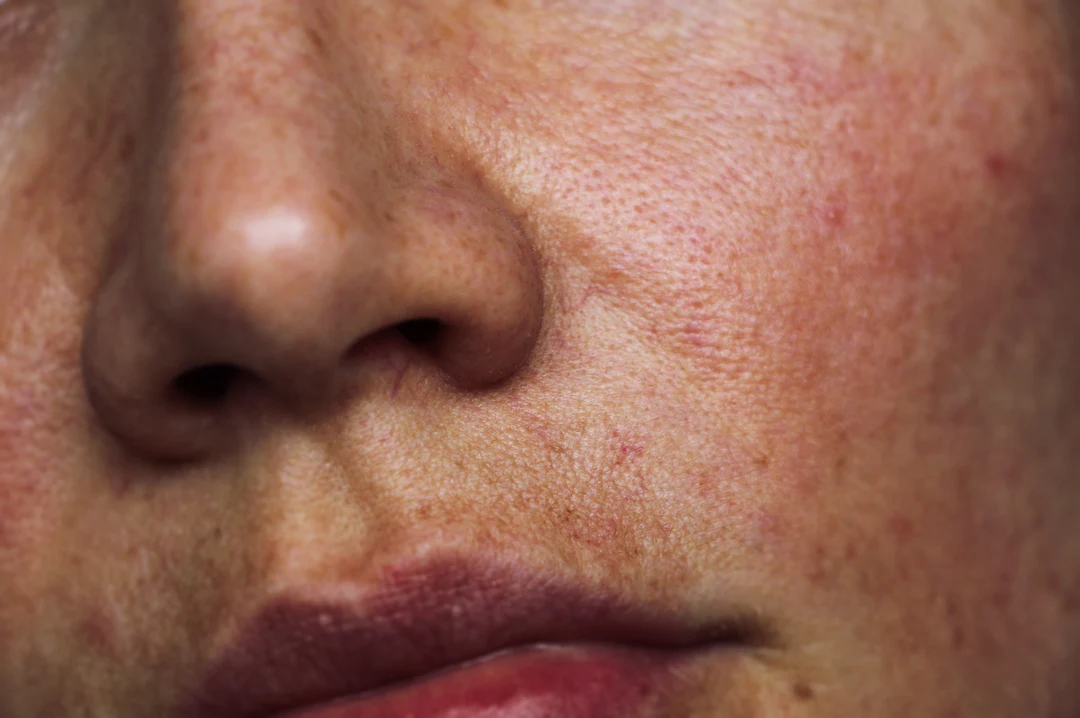
Frequently Asked Questions (FAQs) about Face Masks
Are Face Masks Worth Buying?
A little beauty detox might be fun, but is it worth the money? Simple: yes. It helps deliver active ingredients into the skin, improving its appearance and helping to improve certain skin conditions.
They are also becoming increasingly popular in the UK. Data from the NPD Group shows that sales have soared in recent years, and this trend is only going to increase over time.
What are the different types of face masks?
There are seemingly countless products out there now, but there are roughly five main areas: exfoliation, toning, moisturizing and masks. They all have different benefits, so you need to think carefully about what you want to achieve, your skin condition and what works best for you.
How long should a face mask be left on?
This all depends on the product, not to mention how thick you apply it to your face, but generally speaking it should be left on for 10 minutes. This gives the formula enough time to harden and work its full benefits.
How often should I use a face mask?
Again, this can depend on the skin condition and how your body reacts, so it’s best to experiment. It can also depend on the ingredients used in the mask. But other than that, we recommend about 2-3 times a week.
Some masks can be used once a day, but if you do, be sure to follow up with a moisturizer as you don’t want to dry out your skin.
When is the best time to use a mask?
There is no specific time of day that works best, it depends more on preparation, the time of day of your skincare routine, and whether you need to wear makeup. The most common time for people to use masks is at night, as you need to thoroughly remove your makeup, cleanse your face, and exfoliate before applying a mask.
For the same reasons, many people also find benefits in trying a mask in the morning, but we recommend doing this based on the time that works best for your lifestyle.
Why does my face go numb when I use a mask?
It can be frustrating to feel a tingling sensation on your face after applying a mask but not being able to scratch it. But for some people, it also raises concerns about having a negative reaction. Well, it depends on the formula, but most of the time it’s absolutely fine and a completely normal reaction.
Masks often contain ingredients such as glycolic acid, malic acid, tartaric acid, lactic acid (all AHAs), and salicylic acid (BHAs), and these chemical peels can cause a tingling sensation, which is completely safe and normal.
Why do I break out after a face mask?
While some people react to it, the most common reason is to remove toxins and impurities from the skin. If you think about the purpose of a face mask, it is to remove and eliminate these impurities from the skin. While they will subside and reduce as you incorporate it into your daily routine, you may experience a “breakout” the first time as the impurities are pushed out of the skin.
These masks penetrate deep into the skin and remove dirt, oil, and dead skin cells that have been stuck to it. So if you don’t do it often, this can remove years of grime.
Can I use a face mask if I have a beard?
This all depends on the length of your facial hair. If it’s short and the cream can reach your skin, then it’s worth it, but if you have a thick beard, it may affect the results. There is a lot of evidence that the parts of your face that are covered by hair are better protected from damage and toxins anyway, but if your hair is short enough, then it’s worth it.
Do you need to wash your face after a face mask? Yes, you do need to wash your face afterwards. The charcoal has already absorbed excess oil, dead skin cells, and impurities, so you shouldn’t leave it on your face. It may also dry out your face if you use it for longer than recommended. This all contradicts sheet masks, which shouldn’t be washed off because they’re packed with serums that help moisturize the skin. Do sheet masks remove blackheads? Yes, they do. In fact, it’s one of the most common reasons people use Procoal masks because the activated charcoal acts like a magnet, attracting dirt and grime from the skin. If you start using masks more often and your skin takes care of it, less dirt will be inside. Just make sure to exfoliate beforehand to open up your pores effectively. Which mask is right for my skin type? There are so many different types of masks out there that it’s often hard to know where to start. New trendy ingredients can cause even more confusion because you’ve heard about everything from snail mucus to bamboo. If you have oily skin, your main goal is to remove excess oil from your skin. You may also find that oily skin can suffer from clogged pores and lots of impurities. Therefore, a clay or activated charcoal mask may be a good choice. On the other hand, if you have dry skin, you should opt for an antioxidant-rich and collagen-rich gel mask. This will moisturize your skin (thanks to hyaluronic acid) and make your complexion radiant. This is another reason why serum- and hyaluronic acid-rich masks are becoming increasingly popular. Also keep an eye out for arbutin and bearberry extract. If you suffer from acne, a cleansing mask is the solution (charcoal is also a good choice) as it removes all impurities from the skin. Keep in mind that the first time you use a mask, you may develop a rash as toxins are flushed out of the skin. However, this is natural and part of cleansing your skin. Therefore, we sometimes recommend using a mask for the first time when you can handle acne. If you are lucky enough to have normal skin, you can do a few experiments to find a mask that works for you. If your skin is relatively healthy, you can focus on the main goals of anti-aging and moisturizing the skin to ensure that collagen and elastin production remain high. What to do before applying a mask? Preparing for a face mask is just as important as the mask itself! Many people skip this part and jump right into the application, but they’re shortchanging themselves and preventing themselves from getting the best results. First, you should cleanse your face thoroughly and remove any makeup from your skin (just wash your face thoroughly, guys). After that, you need to consider which peel is best for you. Some people use a machine, while others prefer chemical peels (AHA and BHA). Whatever you choose, you’ll need to do it to remove the top layer of dead skin cells and excess oil, and then open up your pores. Wash off the scrub with warm water, which helps keep your pores open before applying the product to your skin. How to properly apply a face mask? Start at the top of your neck and rub the cream upwards. You want everything to be evenly distributed on your skin. Be sure to avoid certain areas, such as your eyes and mouth. Some people prefer to use their hands, while others prefer to use a brush, there’s no right way. Then it’s time to sit back and wait. Do I need to avoid the sun after using a face mask? You don’t have to be afraid of the sun after applying a face mask. However, we always recommend protecting your skin from the sun as it is one of the biggest factors in skin aging. So, always use a good sunscreen. Do you still need to apply moisturizer after applying a mask? Yes, apply moisturizer on your face after washing off the mask to hydrate your skin. You may also want to steam your face before applying moisturizer so that the moisturizer can effectively penetrate into the deepest layers of your skin. Do masks expire? All reputable masks should have a date. One thing to keep in mind is that some products actually have a manufacturing date instead of an expiration date, which can sometimes cause confusion (especially with products made in Korea). Masks will also expire faster once they are opened. Try to make sure the lid is tightly closed to prevent air from getting in.
DQH Knowledge drop: In your 20s, your skin cell turnover decreases. (Cell turnover is a key component in keeping your skin youthful.) You know what else slows down? Your collagen production. Starting in your 20s, collagen decreases by about 1 percent per year. Should you want to prevent fine lines and wrinkles, start by eliminating behaviors that contribute to premature aging. “If it’s bad for you, it’s bad for your skin,” says dermatologist Michel Somenek.
“Cigarette smoking reduces blood flow to the skin and causes premature wrinkling and a dull skin texture. Making the repeated pursed motion to inhale can also cause smoker’s lines. Alcohol and recreational drugs are toxins for the skin that damage its cellular structure and DNA,” Somenek tells us. “The faster you eliminate vices while you are young, the better chance your skin and body have to recuperate.” Also, adopting an anti-aging routine in your 20s is key. After all, the best offense is a good defense. We spoke to Somenek and experts Joshua Ross and Audrey Kunin to find out more.
Keep reading for the best anti-aging products for your 20s, according to skincare professionals.
Sunscreen
“We all know that the sun is the number one cause of skin aging and starting the prevention in your 20s is very important,” Ross says. “The majority of your sun damage won’t start to appear until you’re in your 30s, so don’t wait until you see it surface or you’ll be behind the curve. Stay ahead of it with a good-quality zinc-based sunscreen worn daily.”
Farmacy Green Defense Daily Mineral Sunscreen
An invisible sunscreen with SPF 30, plus botanical extracts meant to protect skin with tons of antioxidants. Bonus: It’s clean and fine to use under makeup.
Bareminerals Complexion Rescue™ Tinted Moisturizer Broad Spectrum SPF 30
Although we recommend you use your SPF and moisturizer separately, we also understand moments when you don’t have time or energy for that extra step. For those times, this bareMinerals moisturizer is a great thing to have on hand.
Vitamin C Serum
“A great introduction to anti-aging is to start with a vitamin C serum in your morning skincare routine,” Ross says. “It’s a powerful antioxidant that will neutralize free radicals and brighten the skin.” He adds that it’s a great way to counteract the effects of the sun’s harmful rays, which, as previously mentioned, are among the biggest causes of premature aging.
Drunk Elephant C-Firma™ Vitamin C Day Serum
The Drunk Elephant C-Firma is a lightweight serum that promises to give skin a glow by combining the brightening powers of vitamin C with ferulic acid, l-ascorbic acid, and vitamin E. The included sodium hyaluronate is meant to replace hydration loss, so you shouldn’t have to deal with any irritation.
Sunday Riley C.E.O. Rapid Flash Brightening Serum
This potent serum is jam-packed with vitamin C (15 percent, to be exact), which means it’s a potential superstar at both brightening skin and dousing it in antioxidants.
Peptides
Using peptides on your skin has many benefits, says Somenek. “The skin barrier is what defends the body against pollution, UV rays, bacteria, and toxins. It can be damaged by several everyday factors. Using topical peptides aids in building a stronger barrier,” he says. “Peptides comprise elastic fibers, which are a type of protein. These fibers help to make skin appear taut and firm. Peptides can also help repair damaged skin, relieve inflammation, and even out skin tone. Some peptides can kill acne-causing bacteria that is common in 20-somethings.”
Kunin agrees, saying, “Peptides are an excellent entry point for supporting collagen.” She recommends looking for face and eye treatments that contain these collagen-boosting powerhouses.
Charlotte Tilbury Magic Eye Rescue Cream
This Charlotte Tilbury super-emollient eye cream has a base of coconut oil and shea butter (read: it’s incredibly hydrating). Botanicals plus peptides are meant to help reduce dark circles and boost collagen, respectively.
This creamy moisturizer serves up potent collagen-boosting peptides and pycnogenol, and antioxidant-rich vitamin C. “Instead of sitting on top of the skin, peptides penetrate the outer layer so they go deep. The ‘signals’ they send tell the cells to produce elastin and collagen, which are needed for youthful-looking skin,” explains Somenek.
At-Home Peel Pads
Remember that skin cell turnover fiasco we talked about earlier? One way to help support it is by exfoliating. “Exfoliation is important to help keep skin fresh and luminous,” Kunin says. She recommends using at-home peel pads as an easy and effective way to exfoliate.
“The goal in your 20s is to fight the slowing pace of cell turnover. It is wise to use products that gently exfoliate, yet still remove oil and other impurities. Products that have Alpha Hydroxy Acids (AHA) or Beta Hydroxy Acids (BHA) are a good choice.”
According to Somenek, you should only exfoliate two to three times a week. “People of all ages are guilty of over-exfoliating and that can be too much of a good thing,” he says.
Dermadoctor Kakadu C Intensive Vitamin C Peel Pad
A few swipes of this Derma Doctor powerful peel pad promise to leave your skin glowing and smooth, thanks to the seven (yes, seven) types of chemical exfoliants, including AHA and BHA. It also contains vitamin C via Kakadu plum extract for added brightening and antioxidant protection.
KEY INGREDIENTS Kakadu plum extract is sourced from the Kakadu plum, a fruit grown in northern Australia. It contains vitamin C, which restores the skin’s natural barrier, increases collagen production, and soothes irritation.
Dr. Dennis Gross Skincare Alpha Beta® Universal Daily Peel Pads
These are the gold standard of peel pads, with a cult following and over 900 five-star reviews on Sephora. They’re easy to use and contain a blend of anti-aging exfoliating acids.
Emollient Night Cream
“In your 20s, you need to start upping the hydration in your skincare routine. You may have been cautious of over-moisturizing because of acne in your teens, but as you enter your 20s, your skin transitions and becomes drier,” Ross says. “I recommend an emollient night cream added into your evening skincare regimen.”
“Twenty-somethings need to make sure that they are not using creams that will clog their pores and cause excess oil production,” says Somenek. Opt for non-comedogenic products.
Cerave Skin Renewing Night Cream
One great choice is the CeraVe Skin Renewing Night Cream, which is a non-comedogenic night cream that leaves skin soft and glowy. It combines the moisturizing powers of ceramides and hyaluronic acid.
RoC Retinol Correxion Max Hydration Creme
“The best night cream ingredients contain retinol, benzoyl peroxide, and/or salicylic acid or hyaluronic acid. The goal is to moisturize, yet remove excess oil,” says Somenek. This Roc Retinol Correxion cream fits the bill as it contains both hyaluronic acid and retinol so it promises to moisturize while also being non-comedogenic.


